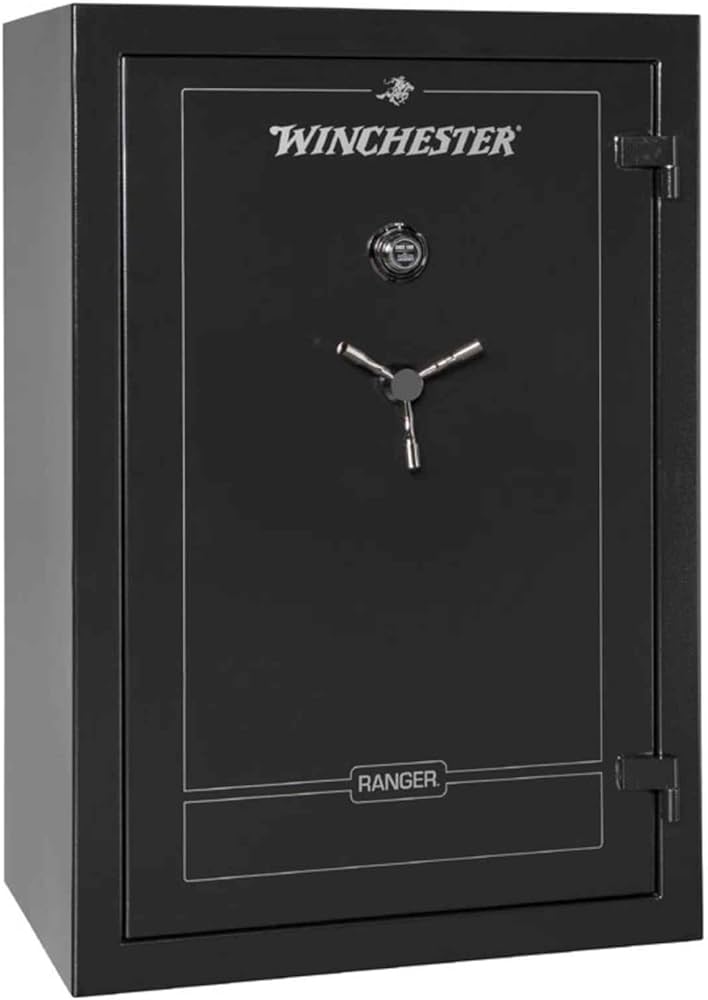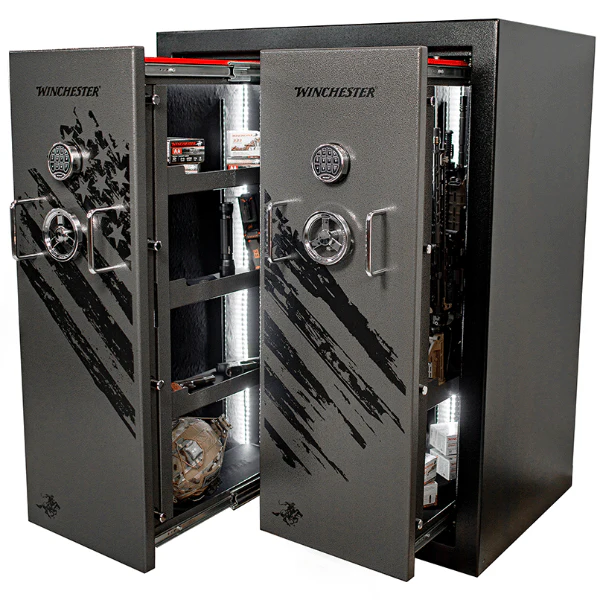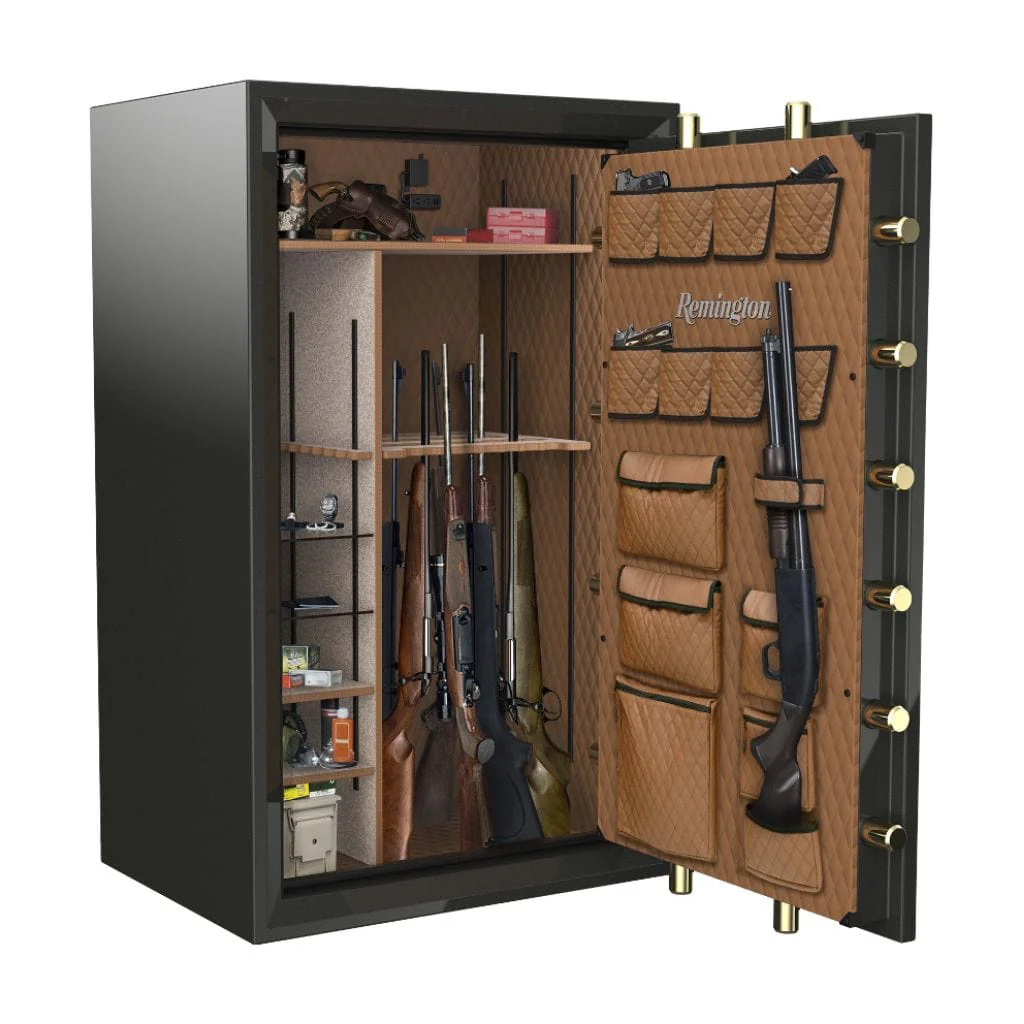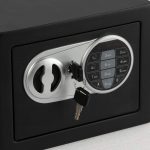I. Introduction
A. Importance of firearm safety and protection
Firearm safety is of paramount importance. Protecting firearms from damage or destruction is crucial not only for their preservation but also for the safety of individuals and their surroundings. One way to ensure their safety is by using fireproof gun safes, which provide an added layer of protection against fire-related risks.
B. Inquiry into the fireproof capabilities of gun safes
This article aims to explore the fireproof capabilities of gun safes. By understanding the fireproof ratings, certifications, and construction factors that contribute to their effectiveness, firearm owners can make informed decisions to protect their firearms from fire hazards.
II. Understanding Fireproof Ratings and Certifications
A. Explanation of fireproof ratings and testing standards

Fireproof ratings provide an indication of a gun safe’s ability to withstand fire and protect its contents. Ratings are determined through rigorous testing and standardized protocols. Common ratings include the UL 72 (Underwriters Laboratories) rating and the ISO 9001 (International Organization for Standardization) certification.
B. Common certifications for fireproof gun safes
Various certifications validate the fireproof capabilities of gun safes. These certifications ensure that fireproof gun safes have undergone rigorous testing to meet specific standards. Examples of common certifications include the UL 350 and UL 72 ratings, which assess a gun safe’s ability to maintain a specific internal temperature during a fire.
III. Factors Affecting Fire Resistance in Gun Safes
A. Construction materials and design features
Fire resistance in gun safes is heavily dependent on their construction materials and design features. Safes constructed with fire-resistant materials, such as high-density concrete or composite layers, offer enhanced protection. Design features like thick walls, reinforced doors, and fire insulation materials contribute to the overall fire resistance of the safe.
B. Fire-protection measures such as insulation and seals

Fire-protection measures, such as insulation and seals, play a significant role in a gun safe’s fire resistance. Insulation materials, like fireboard or ceramic fiber, help maintain the internal temperature and prevent heat transfer. Properly sealed doors and gaps prevent the intrusion of smoke, flames, or excessive heat into the safe.
IV. Evaluating the Effectiveness of Fireproof Gun Safes
A. Testimonials and experiences from firearm owners
Firearm owners’ testimonials and experiences provide valuable insights into the effectiveness of fireproof gun safes. These firsthand accounts offer real-life scenarios that demonstrate how these safes perform in the event of a fire. Owners’ stories regarding the protection and condition of their firearms and other valuables after a fire can help evaluate the durability and reliability of fireproof gun safes.
B. Laboratory testing and industry standards
Laboratory testing and industry standards play a crucial role in assessing the effectiveness of fireproof gun safes. Various organizations conduct rigorous tests to evaluate safes’ fire endurance and impact resistance capabilities, providing objective data on their performance. These tests measure factors such as heat exposure, insulation efficiency, and overall structural integrity to determine if the safes meet or exceed industry standards.
- Fire endurance tests
Fire endurance tests simulate the conditions of a typical fire to measure how well a gun safe can withstand extreme temperatures and keep its contents protected. These tests subject safes to specified temperature levels for a specific duration, often ranging from 30 minutes to several hours. The safes are evaluated based on their ability to maintain their internal temperature within a safe range and protect their contents from heat and smoke damage.
- Impact testing on gun safe contents
To simulate real-life scenarios, impact testing is conducted to assess how gun safes handle the impact and weight of falling debris or collapsing structures during a fire. This testing evaluates if the safe and its contents remain intact and undamaged after experiencing an impact. The results help determine the overall durability and protection offered by the gun safe.

V. Limitations and Considerations for Fireproof Gun Safes
A. Time limitations and temperature thresholds
Fireproof gun safes have specific time limitations and temperature thresholds. While they are designed to protect firearms and valuables from fire damage, it is important to understand the limitations of the safe’s fire resistance capabilities. Exceeding the specified time or temperature thresholds may compromise the effectiveness of the safe, leading to potential damage to its contents.
B. Importance of proper installation and maintenance
Proper installation and regular maintenance are essential aspects of maximizing the effectiveness of fireproof gun safes. Following the manufacturer’s instructions for installation ensures that the safe is correctly positioned and anchored, preventing displacement during a fire. Regular maintenance, such as inspecting seals and hinges, ensures that the safe remains in optimal condition to provide the highest level of protection.
C. Additional precautions for irreplaceable or valuable items
While fireproof gun safes offer enhanced protection, valuable and irreplaceable items such as important documents, jewelry, or digital media may require additional precautions. It is recommended to use fireproof containers specifically designed for protecting these items within the gun safe. This extra layer of protection ensures their preservation even in the event of a fire.
VI. Selecting the Right Fireproof Gun Safe

A. Understanding personal needs and priorities
When selecting a fireproof gun safe, it is essential to consider individual needs and priorities. Factors such as firearm collection size, storage space, budget, and level of fire protection required should be taken into account. Assessing these factors helps narrow down the options and select a fireproof gun safe that aligns with personal requirements.
B. Evaluating fire resistance features, ratings, and certifications
Evaluating the fire resistance features, ratings, and certifications of the gun safe is crucial to determine its effectiveness. Look for safes that have been independently tested and certified to meet or exceed industry standards. Pay attention to fire endurance ratings, insulation materials, and fire seal quality, as these factors greatly influence the safe’s ability to protect against fire damage.
C. Considering additional features for firearm security and accessibility
In addition to fireproof capabilities, consider other features that enhance firearm security and accessibility. Look for safes with advanced locking mechanisms, pry-resistant construction, and customizable interior configurations. Biometric or electronic locks provide quick and convenient access to firearms while maintaining security.
VII. Conclusion
Fireproof gun safes are essential for safeguarding firearms and valuables from fire damage. By considering testimonials, laboratory testing, and industry standards, individuals can evaluate the effectiveness of these safes in protecting their possessions during a fire. It is important to understand the limitations, installation, and maintenance requirements of fireproof gun safes. By selecting the right safe that aligns with personal needs and priorities and encompasses additional security features, firearm owners can ensure their possessions are protected from fire while maintaining accessibility and security.



